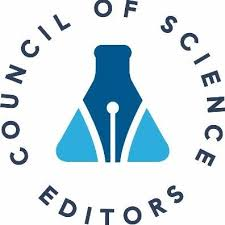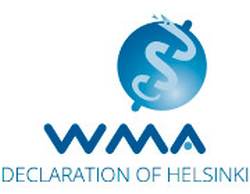1. Domaszewski P. Gender differences in the frequency of positive and negative effects after acute caffeine consumption. Nutrients. 2023; 15(6): 1318. https://doi.org/10.3390/nu15061318
2.
www.driveresearch.com [Internet]. Syracuse: driveresearch.com; 2024 Feb 1. Coffee Statistics: Consumption, Preferences, & Spending [access 2025 March 3]. Available from: https://www.driveresearch.com/market-research-company-blog/coffee-survey/
3.
Severini C, Derossi A, Ricci I, Fiore AG, Caporizzi R. How much caffeine in coffee cup? Effects of processing operations, extraction methods and variables. In: Latosińska N, Latosińska M, editors. The question of caffeine. London: IntechOpen Limited; 2017. https://doi.org/10.5772/intechopen.69002
4.
de Souza JG, Del Coso J, de Souza Fonseca F, Silva BVC, de Souza DB, da Silva Gianoni RL, et al. Risk or benefit? Side effects of caffeine supplementation in sport: a systematic review. Eur J Nutr. 2022; 61: 3823-3834. https://doi.org/10.1007/s00394-022-02874-3
5.
Wilk M, Filip A, Krzysztofik M, Maszczyk A, Zajac A. The acute effect of various doses of caffeine on power output and velocity during the bench press exercise among athletes habitually using caffeine. Nutrients. 2019; 11(7): 1465. https://doi.org/10.3390/nu11071465
6.
Ariffin H, Chong XQ, Chong PN, Okechukwu PN. Is the consumption of energy drink beneficial or detrimental to health: a comprehensive review?. Bull Natl Res Cent. 2022; 46: 163. https://doi.org/10.1186/s42269-022-00829-6
7.
Zimmermann-Viehoff F, Thayer J, Koenig J, Herrmann C, Weber CS, Deter HC. Short-term effects of espresso coffee on heart rate variability and blood pressure in habitual and non-habitual coffee consumers – a randomized crossover study. Nutr Neurosci. 2016; 19(4): 169-175. https://doi.org/10.1179/1476830515Y.0000000018
8.
Yoo C, Xing D, Gonzalez D, Jenkins V, Nottingham K, Dickerson B, et al. Acute paraxanthine ingestion improves cognition and short-term memory and helps sustain attention in a double-blind, placebo-controlled, crossover trial. Nutrients. 2021; 13(11): 3980. https://doi.org/10.3390/nu13113980
9.
Domaszewski P, Pakosz P, Konieczny M, Bączkowicz D, Sadowska-Krępa E. Caffeine-induced effects on human skeletal muscle contraction time and maximal displacement measured by tensiomyography. Nutrients. 2021; 13(3): 815. https://doi.org/10.3390/nu13030815
10.
Surma S, Romanczyk M, Fojcik J, Krzystanek M. Coffee: drug, stimulant substance and narcotic. Psychiatria. 2020; 17: 237-46. https://doi.org/10.5603/PSYCH.a2020.0031
11.
Pakosz P, Konieczny M, Domaszewski P, Dybek T, García-García O, Gnoiński M, et al. Muscle contraction time after caffeine intake is faster after 30 minutes than after 60 minutes. J Int Soc Sports Nutr. 2024; 21(1): 2306295. https://doi.org/10.1080/15502783.2024.2306295
12.
Grzegorzewski J, Bartsch F, Köller A, König M. Pharmacokinetics of caffeine: a systematic analysis of reported data for application in metabolic phenotyping and liver function testing. Front Pharmacol. 2022; 12. https://doi.org/10.3389/fphar.2021.752826
13.
Nehlig A. Interindividual differences in caffeine metabolism and factors driving caffeine consumption. Pharmacol Rev. 2018; 70(2): 384-411. https://doi.org/10.1124/pr.117.014407
14.
Nehlig A, Daval JL, Debry G. Caffeine and the central nervous system: mechanisms of action. Brain Res Rev. 1992; 17(2): 139-70. https://doi.org/10.1016/0165-0173(92)90012-B
15.
Panel E, Nda A. Scientific opinion on the safety of caffeine. EFSA J. 2015; 13(5): 4102. https://doi.org/10.2903/j.efsa.2015.4102
16.
Carrillo JA, Benitez J. CYP1A2 activity, gender and smoking, as variables influencing the toxicity of caffeine. Br J Clin Pharmacol. 1996; 41(6): 605-608. https://doi.org/10.1046/j.1365-2125.1996.35418.x
17.
Lassen ML, Byrne C, Sheykhzade M, Wissenberg M, Hurry PK, Schmedes AV, et al. Sex differences and caffeine impact in adenosine-induced hyperemia. J Nucl Med. 2022; 63(3): 431-437. https://doi.org/10.2967/jnumed.121.261970
18.
Desbrow B, Hughes R, Leveritt M, Scheelings P. An examination of consumer exposure to caffeine from retail coffee outlets. Food Chem Toxicol. 2007; 45(9): 1588-1592. https://doi.org/10.1016/j.fct.2007.02.020
19.
Skinner TL, Jenkins DG, Leveritt MD, McGorm A, Bolam KA, Coombes JS, et al. Factors influencing serum caffeine concentrations following caffeine ingestion. J Sci Med Sport. 2014; 17(5): 516-520. https://doi.org/10.1016/j.jsams.2013.07.006
20.
Domaszewski P, Konieczny M, Pakosz P, Matuska J, Poliwoda A, Skorupska E, et al. Body fat percentage is a key factor in elevated plasma levels of caffeine and its metabolite in women. PeerJ. 2025; 13: e19480. https://doi.org/10.7717/peerj.19480
21.
Domaszewski P, Konieczny M, Pakosz P, Matuska J, Skorupska E, Santafé MM. Obesity as an influencing factor for the occurrence of caffeine-induced effects in women. Nutr Metab Cardiovasc Dis. 2025; 35(4): 103836. https://doi.org/10.1016/j.numecd.2024.103836
22.
Puri BK, Heard CR, Monro JA. Is there a sex difference in adult salivary clearance of caffeine (1,3,7-trimethylpurine-2,6-dione)?. J Oral Biol Craniofacial Res. 2020; 10(2): 20-22. https://doi.org/10.1016/j.jobcr.2020.01.010
23.
Tian DD, Natesan S, White JR, Paine MF. Effects of common CYP1A2 genotypes and other key factors on intraindividual variation in the caffeine metabolic ratio: an exploratory analysis. Clin Transl Sci. 2019; 12(1): 39-46. https://doi.org/10.1111/cts.12598
24.
Temple JL, Ziegler AM. Gender differences in subjective and physiological responses to caffeine and the role of steroid hormones. J Caffeine Res. 2011; 1(1): 41-48. https://doi.org/10.1089/jcr.2011.0005
25.
Konieczny M, Skorupska E, Domaszewski P, Pakosz P, Skulska M, Herrero P. Relationship between latent trigger points, lower limb asymmetry and muscle fatigue in elite short-track athletes. BMC Sports Sci Med Rehabil 2023; 15, 109. https://doi.org/10.1186/s13102-023-00719-y
26.
Hinojosa-Laborde C, Chapa I, Lange D, Haywood JR. Gender differences in sympathetic nervous system regulation. Clin Exp Pharmacol Physiol. 1999; 26(2): 122-126. https://doi.org/10.1046/j.1440-1681.1999.02995.x
27.
Carswell AT, Howland K, Martinez-Gonzalez B, Baron P, Davison G. The effect of caffeine on cognitive performance is influenced by CYP1A2 but not ADORA2A genotype, yet neither genotype affects exercise performance in healthy adults. Eur J Appl Physiol. 2020; 120: 1495-1508. https://doi.org/10.1007/s00421-020-04384-8
28.
Pontifex MG, Vauzour D, Muller M. Sexual dimorphism in the context of nutrition and health. Proc Nutr Soc. 2023; 83(2): 109-119. https://doi.org/10.1017/S0029665123003610
29.
Petrovic D, Pruijm M, Ponte B, Dhayat NA, Ackermann D, Ehret G, et al. Investigating the relations between caffeine-derived metabolites and plasma lipids in 2 population-based studies. Mayo Clin Proc. 2021; 96(12): 3071-3085. https://doi.org/10.1016/j.mayocp.2021.05.030
30.
Cappelletti S, Piacentino D, Fineschi V, Frati P, Cipolloni L, Aromatario M. Caffeine-related deaths: manner of deaths and categories at risk. Nutrients. 2018; 10(5): 611. https://doi.org/10.3390/nu10050611
31.
Willson C. The clinical toxicology of caffeine: a review and case study. Toxicol Reports. 2018; 5: 1140-1152. https://doi.org/10.1016/j.toxrep.2018.11.002
Copyright: © 2025 Pope John Paul II State School of Higher Education in Biała Podlaska. This is an Open Access article distributed under the terms of the Creative Commons Attribution-NonCommercial-ShareAlike 4.0 International (CC BY-NC-SA 4.0) License (http://creativecommons.org/licenses/by-nc-sa/4.0/), allowing third parties to copy and redistribute the material in any medium or format and to remix, transform, and build upon the material, provided the original work is properly cited and states its license.








